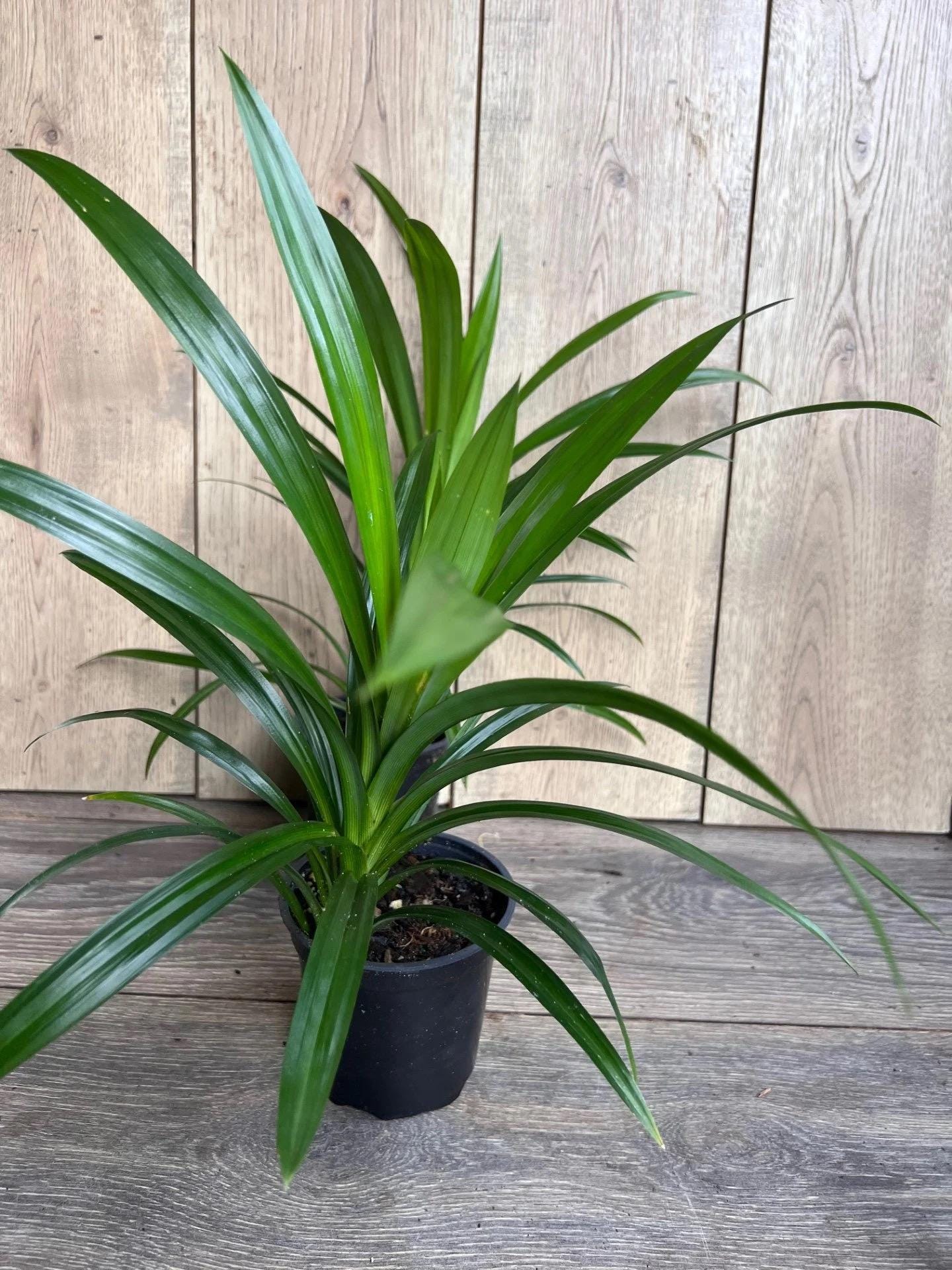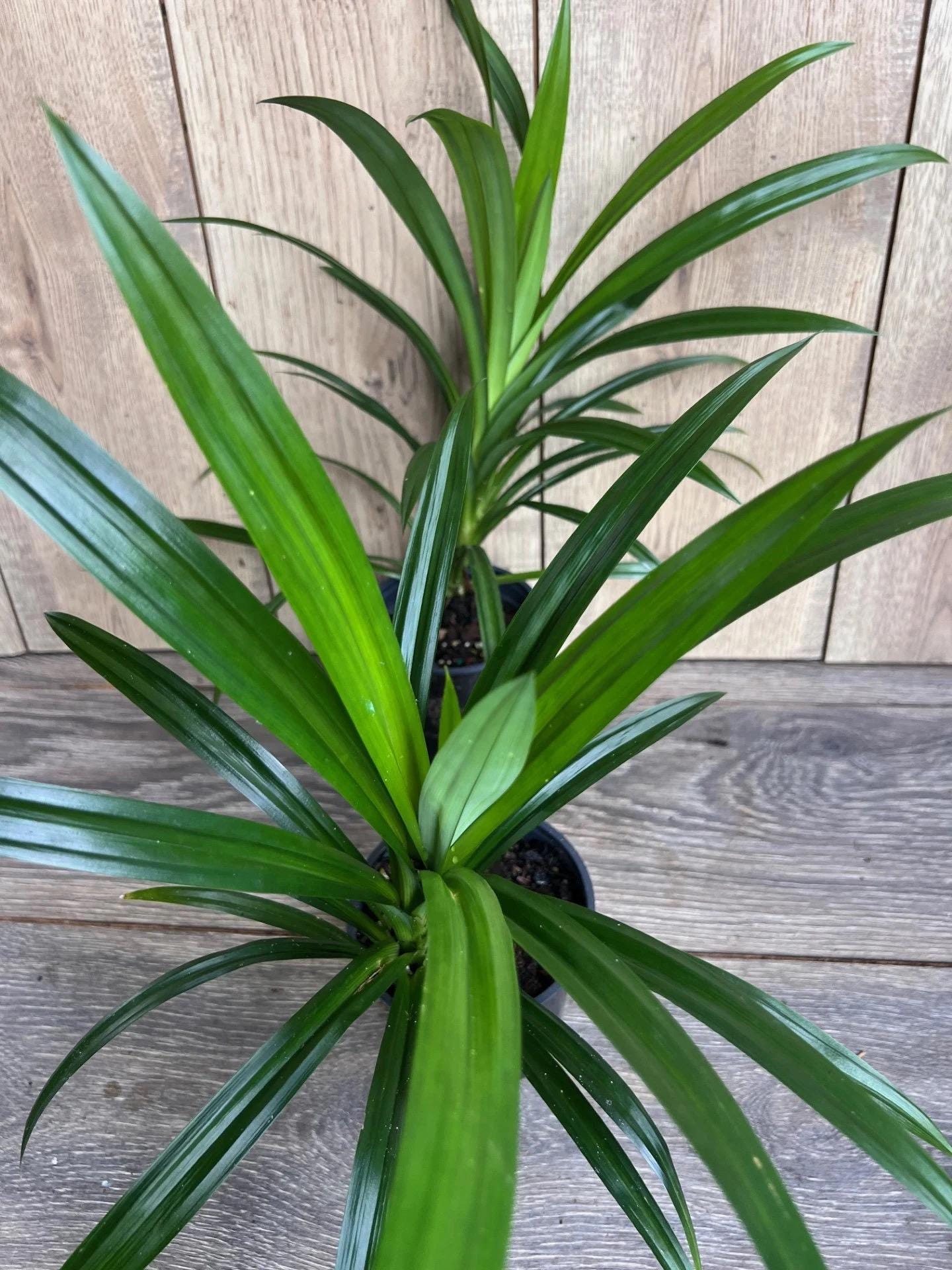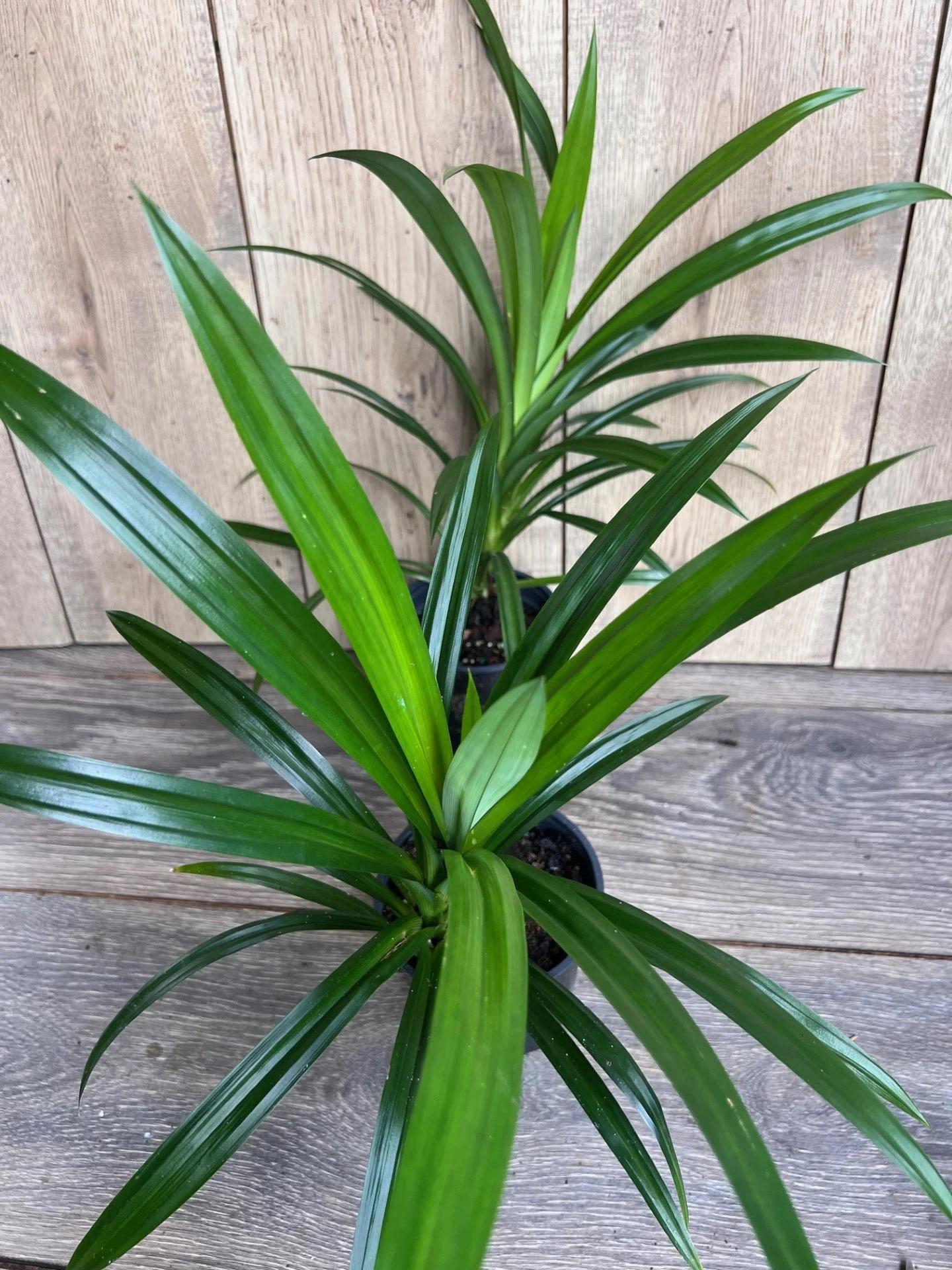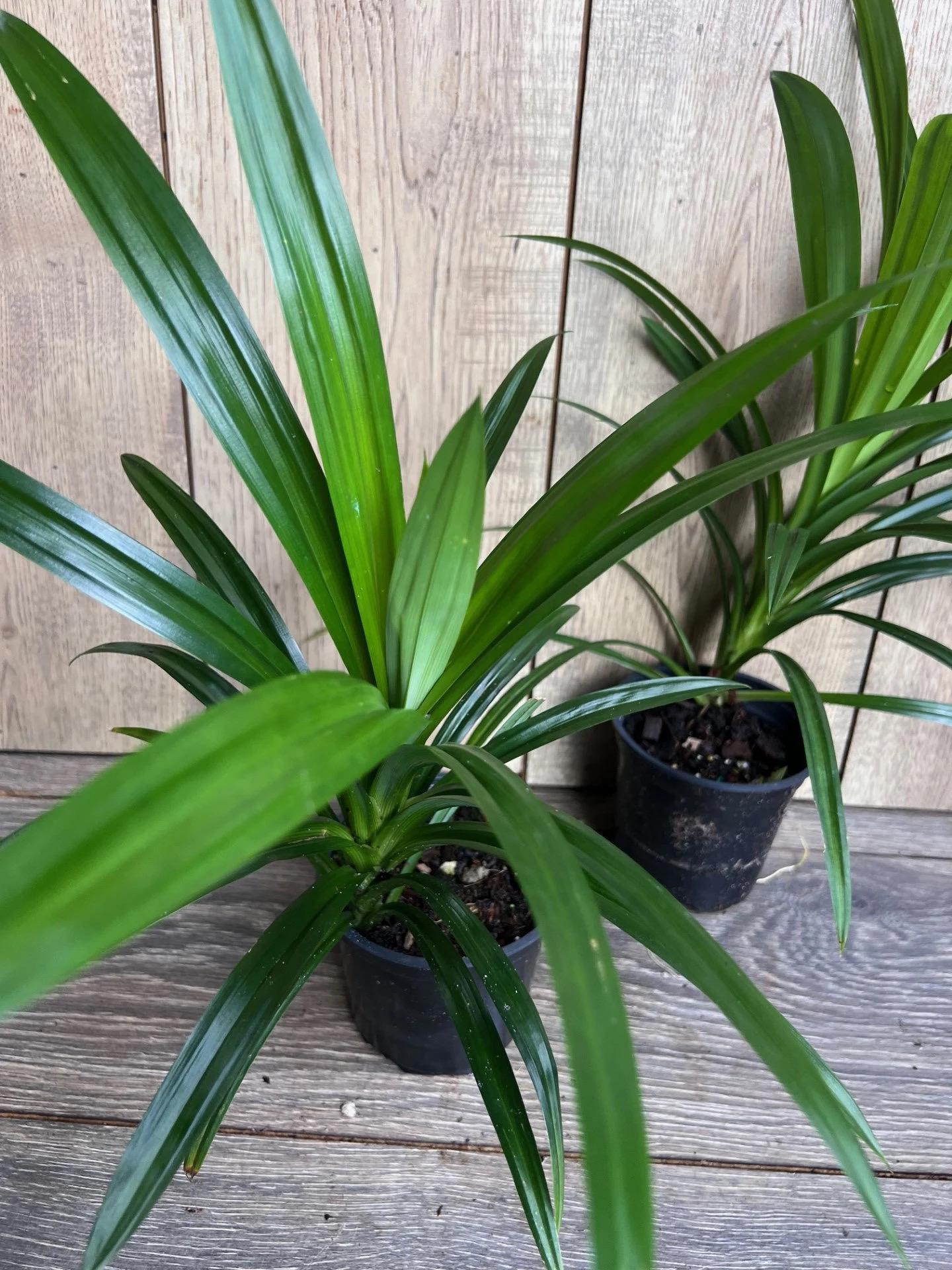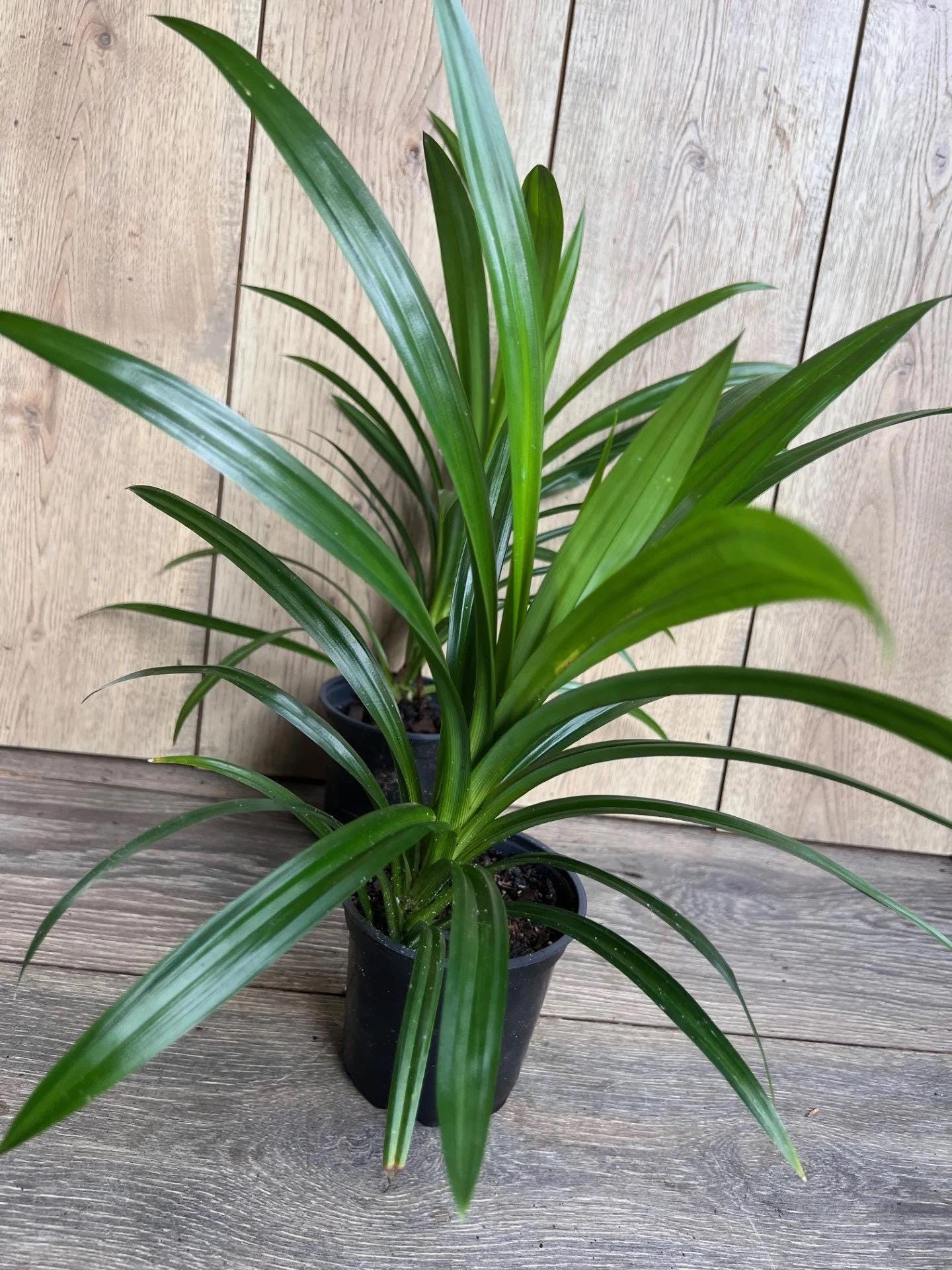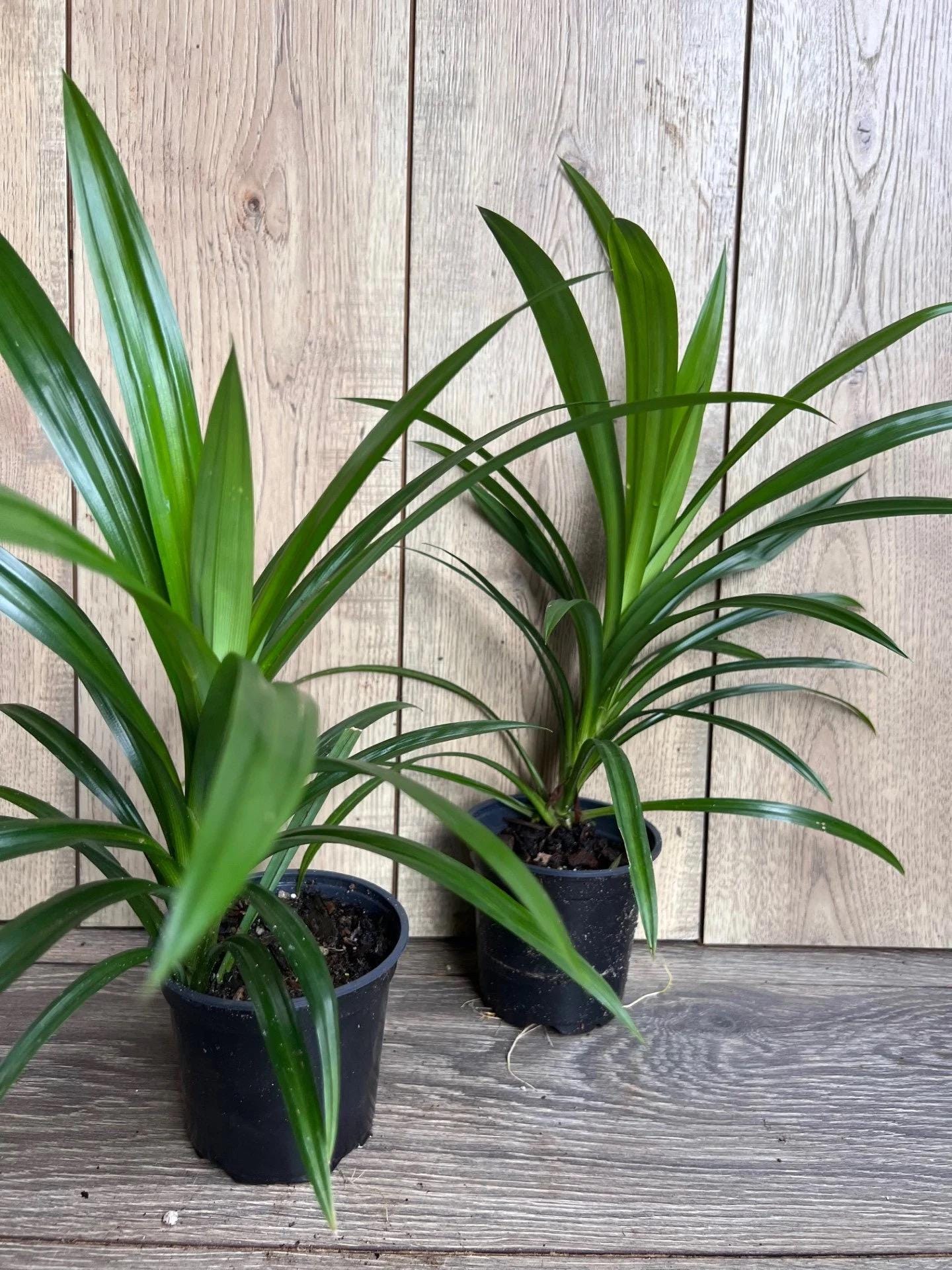Pandan Plant, pandanus, pandan in 4" pot
Pandan Plant, pandanus, pandan in 4" pot
Couldn't load pickup availability
Note: You will receive Pandan Plant in 4" pot similar to the pictures
Pandanus (Pandanus amaryllifolius), commonly known as pandan, is a tropical evergreen shrub native to Southeast Asia, Madagascar, and the Pacific Islands. The plant is prized for its long, sword-like leaves, which are aromatic and widely used in Southeast Asian cuisine and traditional medicine. Pandan's sweet, grassy aroma infuses both savory and sweet dishes, making it a key ingredient in Thai, Malaysian, and Indonesian cooking. Some species, like Pandanus amaryllifolius, are especially valued for their fragrant leaves. Additionally, pandan is used for crafting, such as weaving mats and baskets. The plant’s distinctive growth habit features leaves that grow in a rosette pattern, with lengths ranging from 3 to 10 feet depending on the variety.
Pandan is commonly grown outdoors in tropical and subtropical climates (USDA zones 10–11), but it can also be cultivated indoors in cooler climates, provided its environmental needs are met. It is relatively easy to care for but requires specific conditions to thrive.
Key Care Tips for Pandan (Pandanus amaryllifolius)
1. Light
- Bright, Indirect Light: Pandan thrives in bright, indirect light. Indoors, place it near a window with filtered light. Too much direct sunlight can scorch young leaves.
- Outdoor Conditions: If grown outdoors, pandan prefers partial to full sun but can tolerate some shade, especially in hot climates.
2. Watering
- Consistent Moisture: Pandan prefers consistently moist soil, but avoid overwatering. Water when the top 1-2 inches of soil feel dry, ensuring the soil drains well to prevent waterlogging and root rot.
- Winter Care: During cooler months, reduce watering, but keep the soil from drying out completely.
- Humidity: As a tropical plant, pandan thrives in high humidity. Indoors, mist the leaves regularly, use a humidity tray, or place a humidifier nearby, especially in dry environments.
3. Temperature
- Warm Temperatures: Pandan thrives in temperatures between 75–85°F (24–29°C). It is sensitive to cold and frost, so in cooler climates, consider growing it in a container to bring indoors during the colder months.
- Avoid Drafts: Keep the plant away from cold drafts, air conditioners, or heaters to prevent stress.
4. Soil
- Well-Draining Soil: Pandan requires soil that retains moisture but drains well. A slightly acidic, loamy mix is ideal. In containers, use a well-draining potting mix, adding perlite or sand for better aeration.
- Outdoor Soil: When planting outside, use rich, well-drained soil, and consider adding organic matter like compost to retain moisture without creating waterlogged conditions.
5. Fertilizing
- Balanced Fertilizer: Feed pandan with a balanced, liquid fertilizer during the growing season (spring and summer), about once a month. Use a diluted formula (half strength) to avoid over-fertilizing, which can damage the roots.
- Reduce in Fall/Winter: During the colder months, when the plant's growth slows, cut back on fertilizing or stop entirely.
6. Pruning
- Maintain Shape: Prune dead, yellow, or damaged leaves to keep the plant tidy. Light trimming can also help control its size and encourage fuller growth.
- Handle with Care: Pandan's leaves are sharp, so wear gloves or use pruning shears when trimming to avoid injury.
7. Repotting
- Repot Every 1–2 Years: Pandan may outgrow its pot, so repot every 1-2 years or when it becomes root-bound. Choose a slightly larger pot with good drainage.
- Check Roots: When repotting, inspect the roots for rot or disease and trim any damaged roots before replanting in fresh soil.
8. Pests and Problems
- Pests: While relatively pest-resistant, pandan can occasionally attract scale, mealybugs, or spider mites. Regularly inspect leaves and treat infestations with insecticidal soap or neem oil.
- Root Rot: The biggest concern for pandan is root rot, which is caused by overwatering or poor drainage. Ensure the soil drains well and avoid allowing the plant to sit in water.
9. Special Notes
- Culinary Uses: The aromatic leaves of pandan are a staple in Southeast Asian cuisine. The leaves are typically tied in a knot and added to dishes such as rice, curries, and desserts for flavor, then removed before serving.
- Ornamental Value: Beyond culinary uses, pandan's long, arching leaves make it a striking ornamental plant, perfect for tropical gardens or as a houseplant.
Share
